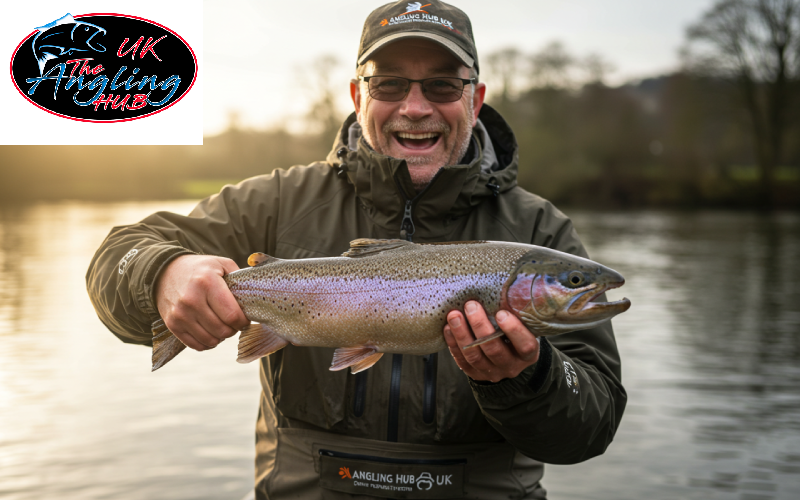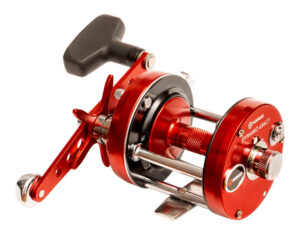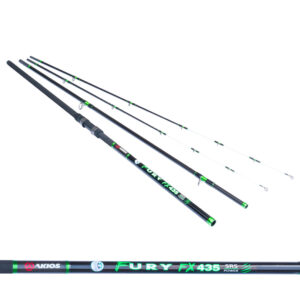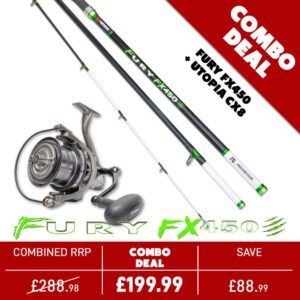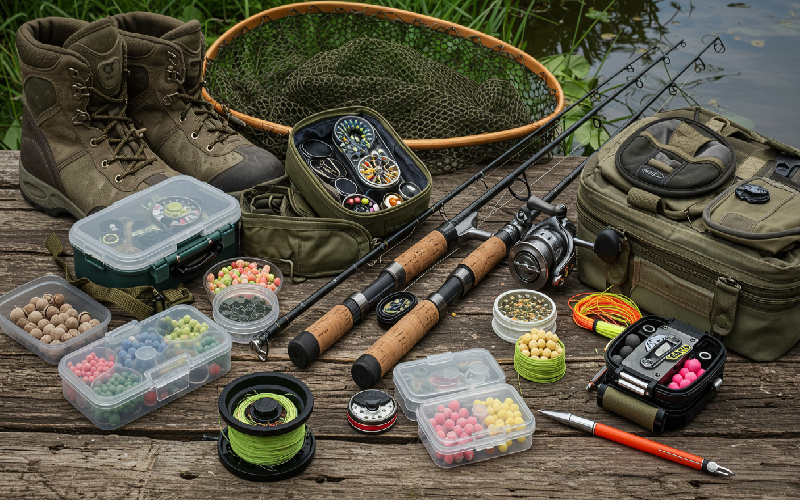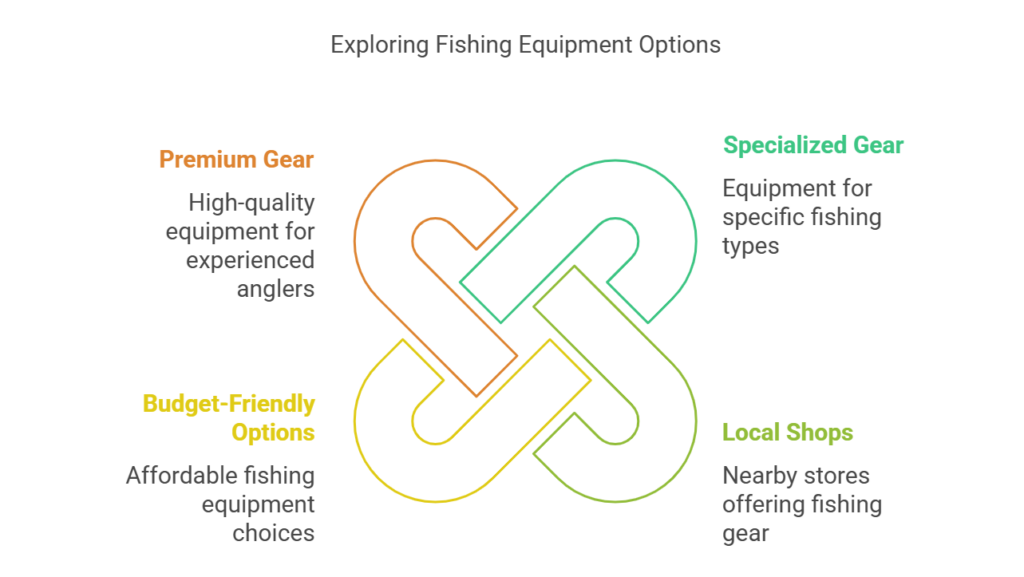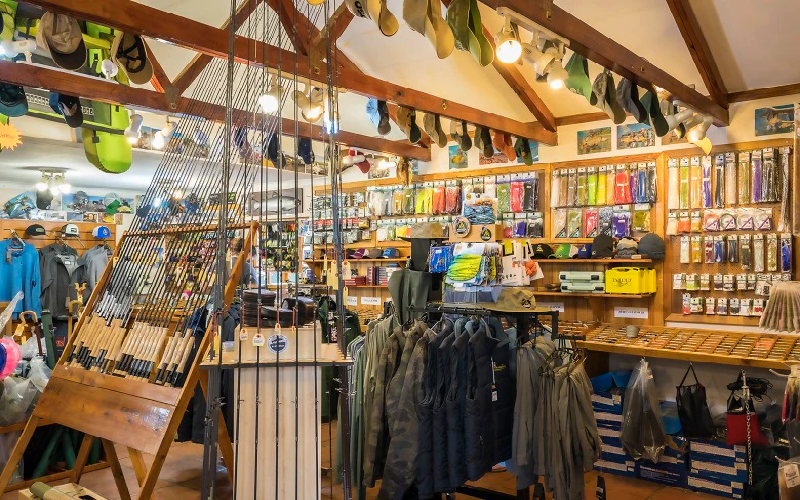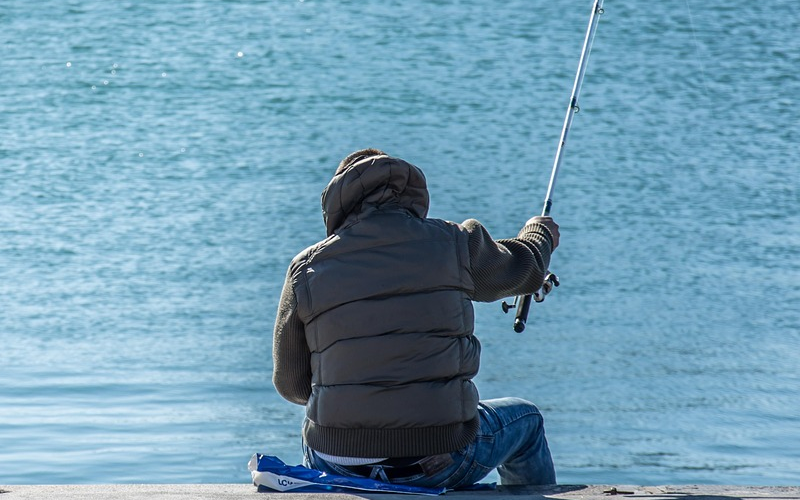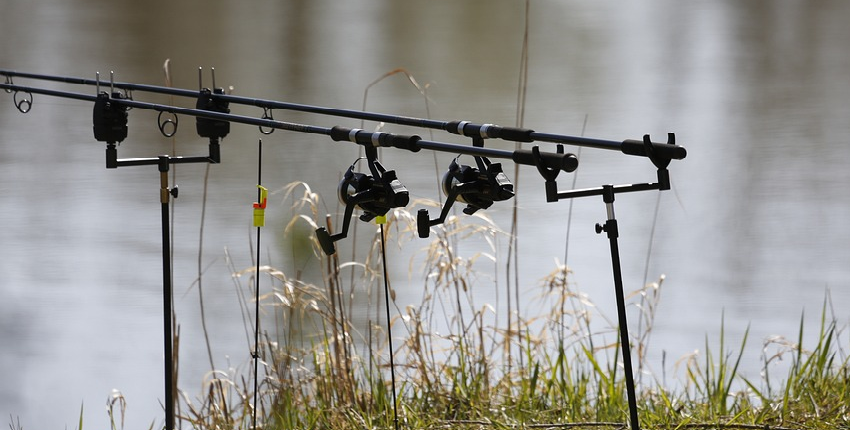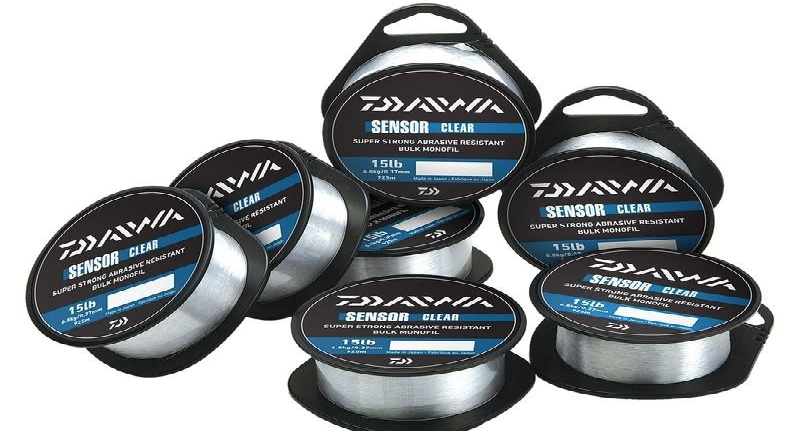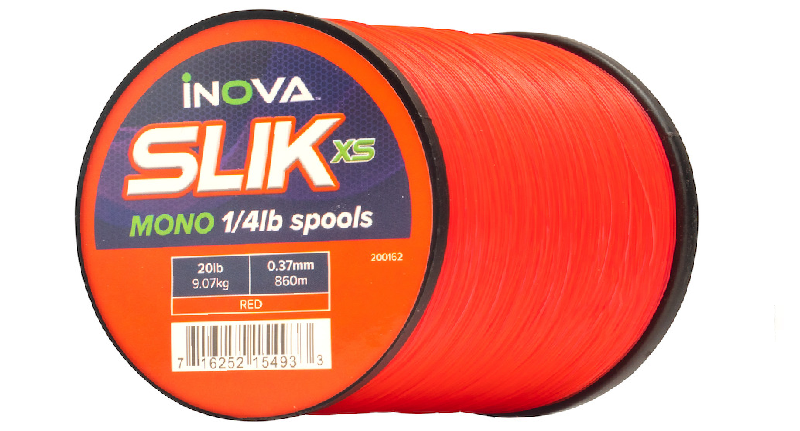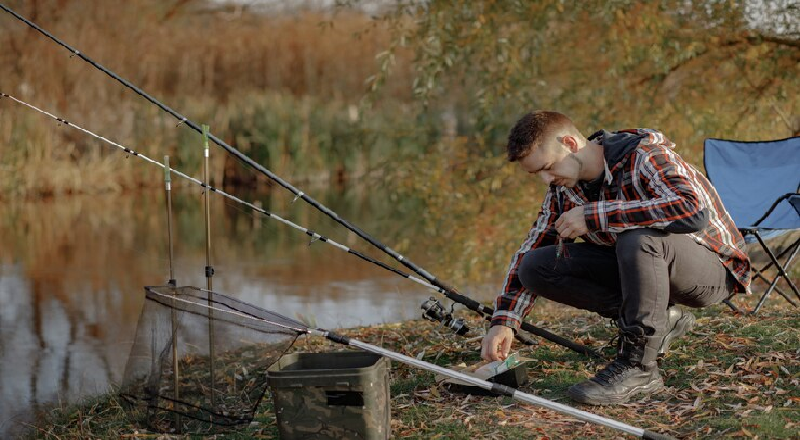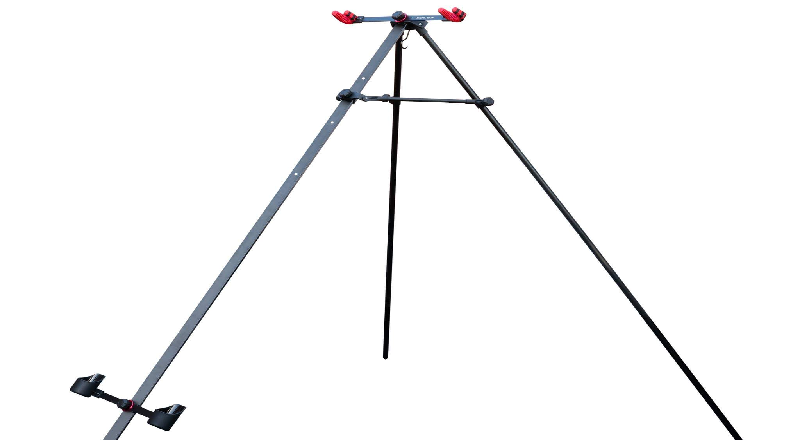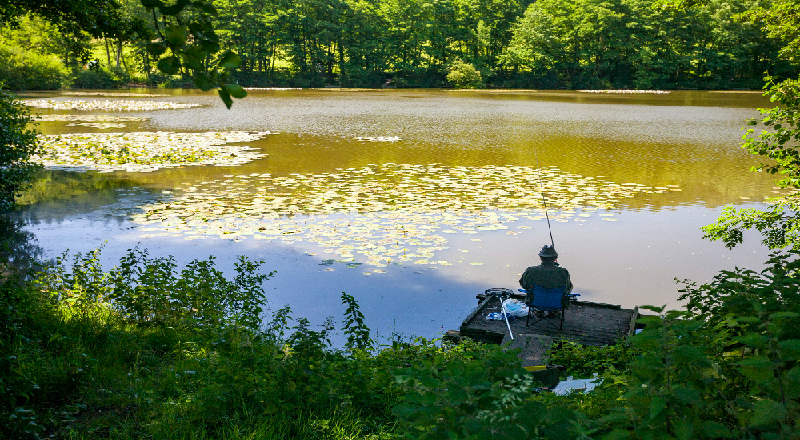Budget-Friendly Fishing Reels for Beginners in the UK
Choosing the Budget Friendly Fishing Reels can feel overwhelming, especially when you’re just getting started with angling. With so many options available, it’s easy to overspend on unnecessary features or pick a reel that doesn’t fit your fishing style. That’s where we come in! This guide will introduce you to budget-friendly fishing reels ideal for beginners in the UK. Whether you’re into sea fishing, carp fishing, or spinning, we’ve got you covered with top recommendations and expert advice.
By the end of this post, you’ll know exactly how to pick the perfect reel for your needs, along with some great options from the Akios range that combine quality with affordability.
Why Choosing the Right Fishing Reel Matters
Fishing reels are more than just fancy gadgets that hold your fishing line—they’re essential tools that can make or break your fishing experience. The right reel improves casting accuracy, ensures smooth retrieval, and makes it easier to handle different types of fish. Here’s why choosing the right one is so important:
- Casting Performance: A good reel ensures smoother, longer casts, critical for sea or distance fishing.
- Control and Retrieval: The right reel will help you control the line better, making it easier to reel in even the trickiest catch.
- Compatibility: Matching your reel with the right rod—like a sea rod and reel combo or carp fishing rods and reel combos—ensures your setup works seamlessly.
If you’re just starting out, it’s all about finding a reel that delivers performance without overwhelming you with complexity. Let’s explore the types available.
Types of Fishing Reels for UK Anglers
Different types of fishing reels are designed for specific fishing styles and environments. Here’s a breakdown of the most popular options for beginner anglers:
Boat Reels
Boat reels are made for sea fishing from boats and are built to withstand tough conditions. They’re durable, corrosion-resistant, and designed for smooth drag performance.
- Example: Akios Tourno 656 MM3 Multiplier Reel
Perfect for boat fishing, this reel is built to handle the saltwater environment while delivering impressive performance.
Multiplier Reels
Ideal for long-distance casting and heavy-duty fishing, multiplier reels have a high line capacity and robust design.
- Example: Akios Dynamo 656 CT Multiplier Reel
This beginner-friendly option is great for carp fishing as well as sea angling.
Fixed Spool Beach Reels
Fixed spool reels are beginner-friendly and perfect for shore fishing. They’re versatile, easy to use, and handle larger fish comfortably.
- Example: Akios IRONSPIN 50 Powerhouse Fixed Spool Reel
A reliable and affordable choice for sea fishing enthusiasts.
Spinning Reels
Lightweight and easy to handle, spinning reels are great for beginners and work well for both freshwater and light sea fishing.
- Example: Akios SPYRO RS Fixed Spool Reels
These reels are budget-friendly and versatile, catering to spinning enthusiasts just starting out.
Top Budget-Friendly Fishing Reels for Beginners
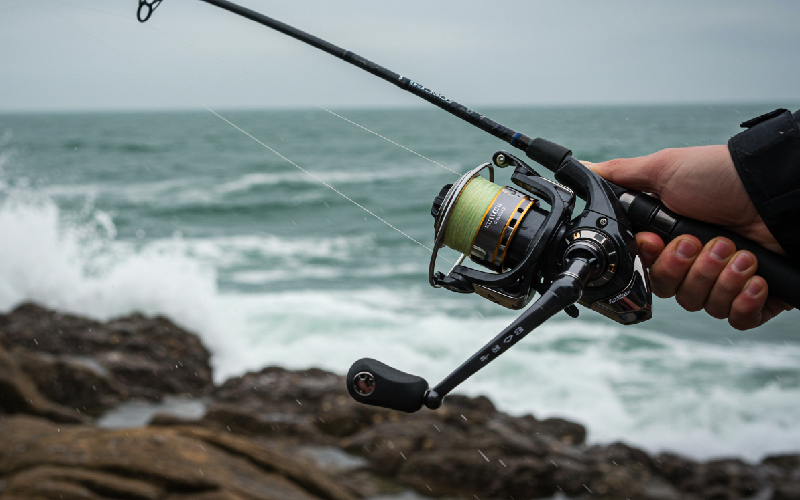
Here are some excellent reels that strike the perfect balance between quality and affordability:
1. Akios IRONSPIN 50 Powerhouse Fixed Spool Reel
- Affordable and durable, Akios IRONSPIN 50 Fixed Spool reel is perfect for beginners venturing into sea fishing.
- Its smooth operation and sturdy build make it a reliable choice for tackling larger catches in saltwater.
2. Akios Dynamo 656 CT Multiplier Reel
- Akios Dynamo 656 CT Multiplier Reel is designed for long-distance casting and offers excellent value for money.
- Whether you’re into carp fishing or sea angling, the Dynamo 656 CT is a fantastic starter reel.
3. Akios S-LINE 651 CTM GRX GUNSMOKE GREY
- A left-handed multiplier Akios S-LINE 651 reel offering precision performance at an affordable price.
- Great for beginners exploring multiplier fishing reels.
4. Akios Shuttle 651 STR KURO (Left Handed)
- With its sleek design and smooth performance, this reel is perfect for carp fishing on a budget.
5. Akios Tourno 656 MM3 Multiplier Reel
- Versatile and durable, this Akios Tourno 656 MM3 Multiplier Reel is ideal for both boat and sea fishing setups.
- Beginners looking to invest in a reliable sea rod and reel combo will love this option.
6. Akios SPYRO RS Fixed Spool Reels
- Lightweight and easy to use, perfect for beginners venturing into spinning fishing.
7. Akios FURY FX8
- Compact yet powerful, this Akios FURY FX8 Reel is ideal for travel and light fishing—perfect for beginners looking for versatility.
For more recommendations, check out our guide on affordable fishing reels.
How to Choose the Right Fishing Reel for Your Needs
Picking the right reel doesn’t have to be complicated. Here are some tips for making the best choice:
Consider Your Fishing Style
- Sea fishing? Look for sea fishing reels and a sea rod and reel combo to handle harsh saltwater conditions.
- Carp fishing? Opt for specific carp fishing reels or carp fishing rods and reel combos to tackle larger fish effectively.
- Spinning? Lightweight spinning fishing reels are great for beginners practicing their casting skill.
Balance Budget and Quality
While it’s tempting to go for the cheapest option, investing in a well-made reel will ensure durability and better performance. Akios reels, for instance, offer premium features at affordable prices.
Ease of Use
Beginners should prioritize reels that are simple to set up, use, and maintain.
Durability
Saltwater can be tough on fishing gear, so sea fishing reels should be corrosion-resistant to last longer.
Essential Accessories for Your Fishing Reel

To get the most out of your reel, consider investing in these accessories:
- Fishing Line: Choose the right fishing line type (e.g., braided or monofilament) to suit your reel and fishing style.
- Reel Maintenance Kit: Regular maintenance will keep your reel in top shape for longer.
- Rod and Reel Combos: Save money by purchasing combos like sea rod and reel combos or carp fishing rods and reel combos.
Where to Buy Budget-Friendly Fishing Reels in the UK
Looking for reliable and affordable fishing reels in the UK? Check out Angling Hub UK, a trusted source for beginner fishing gear and accessories. They stock a wide range of Akios fishing reels, offering great deals and plenty of variety.
Browse our fishing reels for sale today, and find the perfect reel for your next fishing adventure!
Gear Up and Start Fishing!
Choosing the right fishing reel can transform your angling experience, especially when you’re just starting out. With options like Akios fixed spool and multiplier fishing reels, you can enjoy premium quality without breaking the bank.
Explore The Angling Hub UK’s budget-friendly reel options and get ready to reel in the big one. With the perfect setup, you’ll be ready to tackle any fishing challenge the UK waters throw your way!




